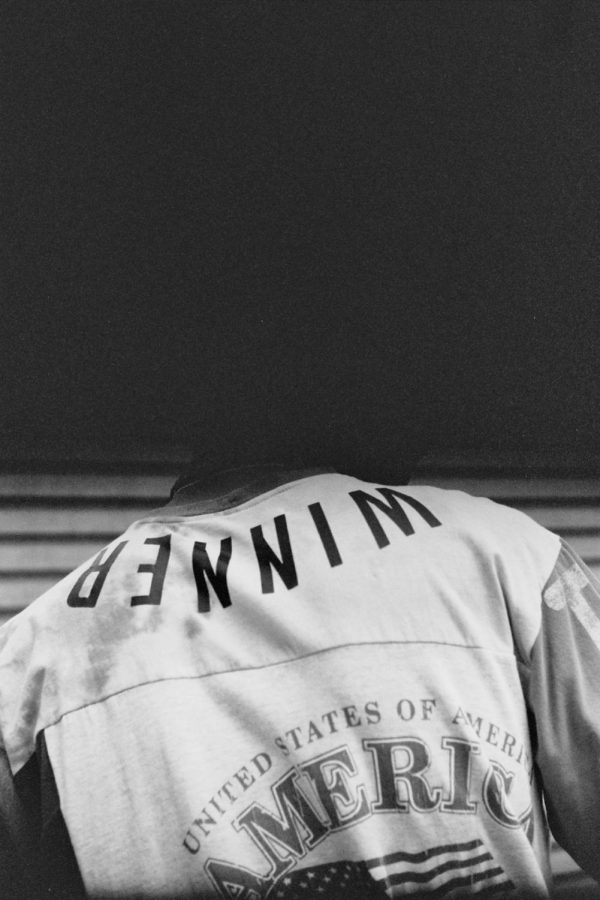Interviews with Student Submitters to the Scholastic Art and Writing Competition
December 18, 2019
For many BASIS Independent Brooklyn students taking art classes, November is a busy month. Students have been preparing their submissions to the Scholastic Art and Writing awards, and as of December 3, their projects have been submitted for official review by the organizers of the competition. If the students’ work is favorable to the judges, they may have the opportunity to win prizes including scholarships up to $10,000.
Of course, there are many different things one can submit to Scholastic, and each project is unique in the way that it is the artistic expression and hard work of the person behind it. To get a sense of the variety of what students have worked on over the course of the last few months, I have conducted some interviews with BASIS submitters who were so kind to share their work with me.
The first interview I conducted was with Vito L., a junior:
J: “Vito, I have heard a lot about your recent submission to the scholastic project.”
V: “I am sure you have.”
For his Scholastic project, Vito had prepared a series of strange and disgusting food recipes and took photos of them.
J: “Could explain to me what you did for this project?”
V: “So I looked at some ravioli and I thought, this would make some great cereal.”
For Vito, this moment of inspiration eventually evolved into his overall theme:
V: “I wanted to connect people with the absurd, breaking the boundary between what is considered delicious and appealing food and what is considered disgusting and awful food.”
J: “What motivated you to engage with this theme?”
V: “I was interested in making people laugh while making them feel internally disgusted.”
In one of Vito’s images, “A Peculiar Cereal,” frozen ravioli sits haphazardly in a small bowl on a table, mixed in with a variety of other interesting ingredients. Vito describes some of these ingredients he used in the image:
J: “Could you tell me some of the recipes you used in your photos?”
V: “This is called ‘A Peculiar Cereal’, a fine mushroom ravioli picked freshly from the frozen section of my local grocery store.”
J: “Tell me more about the ingredients.”
V: “It is topped with a fine Irish decaf tea. The banana in the background is there for scale, also from said grocery store.”
In another image, “The Orange and Cream Soda,” Vito continues with his use of unconventional combinations of ingredients to different but no less disgusting results, creating a beverage that almost brings to mind the old dare of mixing of every type of soda at the fountain, (although thankfully nobody attempted to drink what was depicted in the image):
V: “‘The Orange and Cream Soda’ is an image that is as well meant to create a sense of disgust.
J: “Go on.”
V: “…DJ [and I] had the idea that instead of orange cream soda, we would fill the bottle with a mixture of orange juice, apple cider vinegar, and whole milk. We purposefully poured orange juice on the top and bottom to make the final image look even more disgusting.”
Holding the final product over the background of an NYC skyline, “The Orange and Cream Soda” is a seemingly simple image that becomes increasingly gross with further examination.
A funny and very interesting concept. Amazing job Vito!
The second interview I conducted was with Danny, a sophomore:
For Danny, submission to the scholastic project was not only an exercise in art-making but also in the physical act of exploration. During trips to a variety of places ranging from NYC’s Chinatown to the Dominican Republic, Danny took pictures of wildlife, street scenes, architecture, and portraits.
J: “What kinds of photos did you take, or did you have a theme?”
D: “Sort of a collection of my best travel works.”
J: “That’s awesome! Where did you go?”
D: “Dominican Republic, Italy and Long Island.”
J: “What in particular did you take photos of?”
D: “Architecture, streets, wildlife, and portraits.”
In “A Man Washing a Door in Chinatown,” compositional symmetry is balanced with vivid, contrasting colors, as well as light and shadow, to create a satisfying visual experience. Moving outward from the seemingly simple subject matter of a man washing a door, details and textures allow the image to be engaging for a long time.
J: “I’m sure those things were quite different across those regions. Any photo you especially like?
D: “A man washing a door in Chinatown, I’d say it’s one of my best street photos.”
J: “Would you also call that one a portrait?
D: “I guess, yeah.”
After seeing the image for myself, I now understand what Danny meant when he called it a street photo. Rather than being the sole focus of the image, the man washing the door is much more of a foremost element in a larger composition. Amazing job Danny!
While the Scholastic Art and Writing awards are competitive, Vito and Danny’s works show that art submissions can be almost anything. By putting their effort and ideas into the process of creating finished products, not only did they make a contribution to the expanding world of teenage artists but they also had fun and expressed themselves. Let us take inspiration from their sense of adventure and approach our own projects, whatever they may be, with the same spirit.


